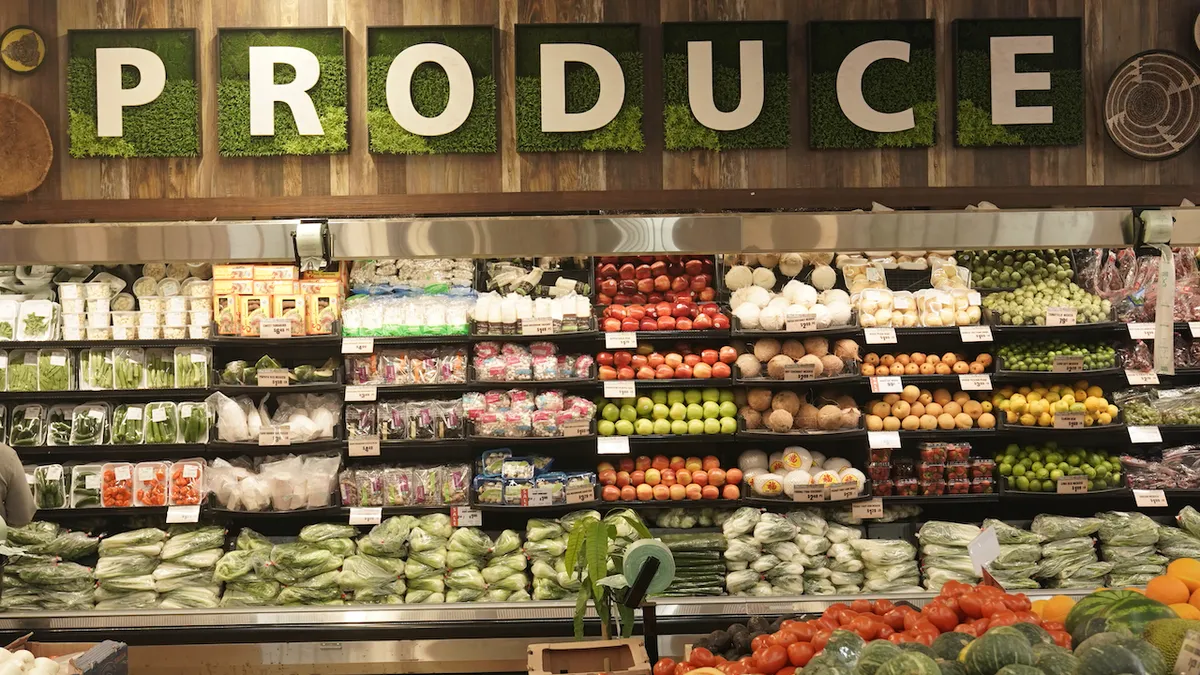Dive Brief:
- Food-at-home prices spiked 13.1% in July on a year-over-year basis, a pace that exceeded the level logged in June even as the overall rate of inflation lost steam, according to Consumer Price Index data released Wednesday by the U.S. Bureau of Labor Statistics (BLS).
- The food-at-home index rose 1.3% in July compared with the prior month, pushing the gauge to its highest annual tempo since March 1979.
- Overall inflation came in at 8.5% in July, down from 9.1% in June, suggesting the closely watched economic indicator may have peaked after rising almost continuously since last summer.
Dive Insight:
The increase in the BLS’ food-at-home index in July marks the 14th straight month of rising grocery inflation in the United States, underscoring the challenges food retailers are facing as they strive to help stressed-out shoppers make ends meet.
Food prices continued to climb last month against a backdrop of declining fuel costs, placing a spotlight on supermarkets as people navigate the unsteady economy. Gasoline prices, which, like food costs, are top-of-mind for consumers, fell 7.7% in July compared with June, although they were still up 44% over the past year, according to the government.
The increases in grocery prices recorded in July were broad-based. Prices for cereals and bakery products bulked up at a 15% annual clip, while meat, poultry, fish and egg prices rose 10.9%. Fruit and vegetable prices grew 9.3%, and prices for dairy and related products surged 14.9%.
Prices for food consumed away from home, meanwhile, were up at a 7.6% annual pace in July, down from 7.7% in June, according to the BLS.
The relentless increase in what people are paying for groceries is having a clear impact on their shopping patterns, IRI noted ahead of the government’s release of inflation data for July. Consumers are increasingly responding to promotions and showing increased interest in value-oriented categories like pasta and canned soup, and also directing more spending toward less expensive brands, according to a Tuesday email from the analytics firm.
“The longer inflation goes on, the more likely it is for consumers to make permanent the behavior changes they’ve adopted during these inflationary times – whether that’s switching to more private-label products or buying a larger share of their essential goods at dollar stores and value-driven grocers,” Matt Pavich, senior director of retail innovation for price optimization firm Revionics, said in comments sent by email after the CPI figures were released.













